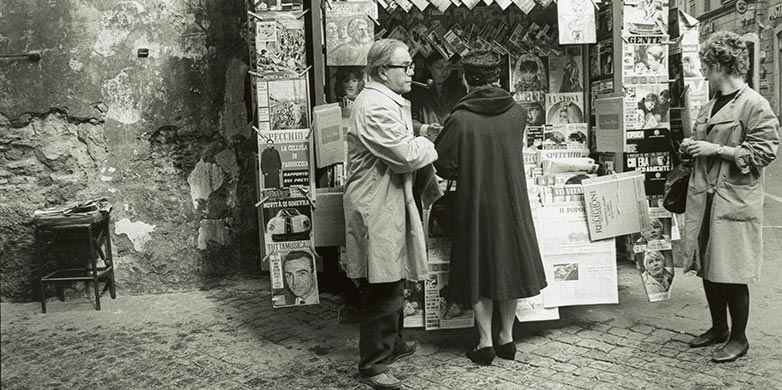“I try on stories like clothes!”
In 1964, Max Frisch published a new novel, “Gantenbein”. To mark the novel’s 50th anniversary, the Max Frisch Archive at the ETH-Bibliothek is holding an exhibition in its honour.
Writing did not come easy to him. During the four years he spent working on “Gantenbein”, Max Frisch repeatedly admitted to friends and confidants that progress on his novel was very slow, likening it to a pile of sand that refused to be transformed into a sandcastle. Nevertheless, he could not abandon what he described as a “mad pastime”. By the end of 1959, he had already compiled his first collection of handwritten ideas, to which he gave the title “Der Blindgänger” – “The dud”.
A year later, he published a text in the “Weltwoche” magazine entitled “Unsere Gier nach Geschichten” (“Our greed for stories”), which would go on to form a programmatic concept for his new novel. The central purpose of the text was not to tell the biographical tale of a hero, but to explore various versions of one identity.
Exploring the possible
The first-person narrator, Gantenbein, has the opportunity to “try on” stories like clothes and to become a pawn in a game involving variations of alternative existences. At the same time, Gantenbein discovers his own transience. This realisation awakens a need to give an account of himself and to explore what he has missed and what is still possible.
An early incarnation of the novel, which Frisch finished in May 1963, bore the title “Lila oder Ich bin blind” (“Lila or I am blind”). Ingeborg Bachmann, who lived with Frisch from 1958 to 1962, read the manuscript and Frisch revised the text several more times based on her impressions. He confessed to his fellow writer Martin Walser his concern “that Lila/Gantenbein would be compared with Bachmann/Frisch, which would be awful. That is why I had to get rid of a lot, fictional aspects.” When he sent the provisional final draft to his publisher in March 1964, he decided on a definitive title for his work: “Mein Name sei Gantenbein”.
Despair in a comic disguise
Frisch anxiously awaited the initial reactions of his friends and acquaintances. He feared that the book would be a failure because it presented “despair in a comic disguise”. Contrary to his expectations, the novel proved a resounding hit with readers after its publication, topping the bestseller list in the newspaper “Die Zeit” from October 1964 to February 1965. Just a few months after the first edition was released, the print run had already exceeded 100,000 copies. However, the responses the book elicited from the literary critics of the time ranged from sceptical to downright dismissive.
In addition to Frisch’s preliminary ideas for “Gantenbein”, the exhibition organised by the Max Frisch Archive features original letters from Martin Walser, Joachim Kaiser and Kurt Hirschfeld, who offered Frisch helpful encouragement during his writing process. And of course, alongside the documents detailing the novel’s reception, the exhibition would not be complete without a pair of glasses for the blind and a pipe.

Comments
No comments yet